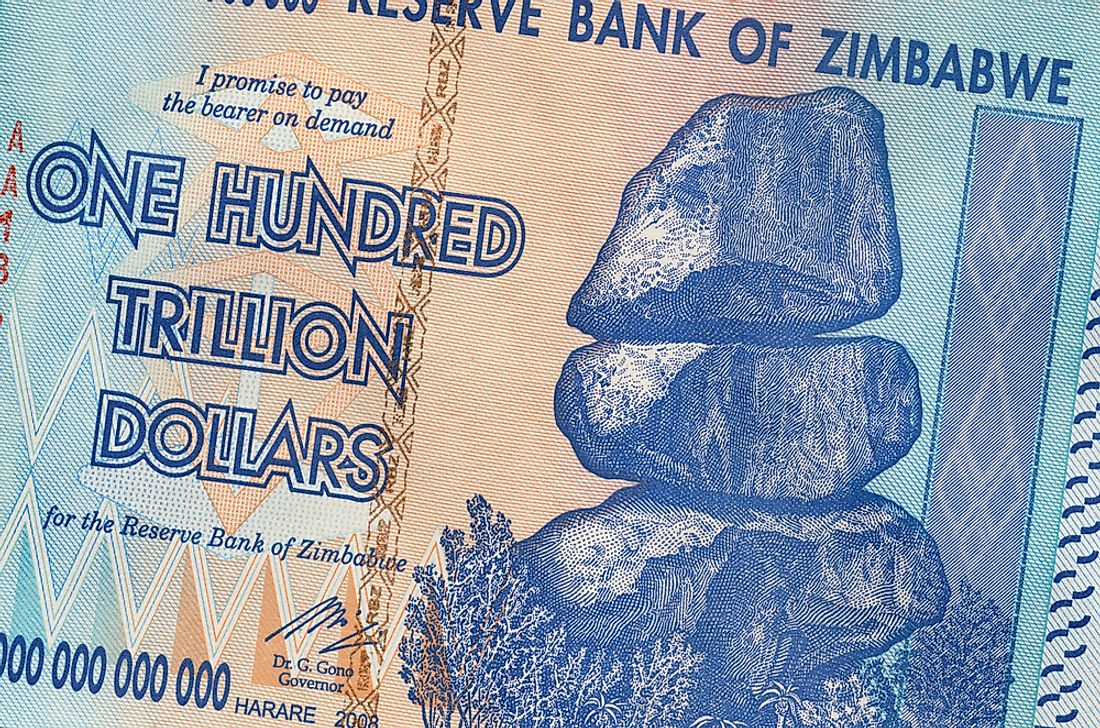The Story of Hyperinflation in Zimbabwe

Introduction
Hyperinflation refers to a period when the monetary unit of a country is unstable. It famously occurred in Zimbabwe in the late 1990s.
History
The republic of Zimbabwe attained independence on April 18, 1980. After independence, Mugabe's government adopted the use of Zimbabwean dollar in place of the Rhodesian dollar. Economic growth was steady at the independence period and the Zimbabwean dollar was doing well against the benchmark US dollar.
The ruling Zanu-PF government began an Economic Structural Adjustment Program (EASP) 1991-1996 that negatively affected the Zimbabwean economy. In the late 1990s, the government further implemented land reforms that aimed at chasing white landowners and giving their pieces of lands to black people. This move by the government worsened the economic situation in the country. The black farmers had no experience in farming and that led to a drop in food production. In 1999-2009, the economy of the country was in a decline as the banking sector collapsed and farmers could not get loans for capital development. Unemployment rose to a high of 80% and as a result life expectancy fall.
Causes
• Excessive printing of money caused much of the hyperinflation. Mugabe’s government were printing a lot of money to service their financial needs in the Second Congo War. This was to meet the demand of higher salaries for government officials and the army.
• Lack of confidence in the government leads to institutional corruption. Zimbabwe is ranked 157th in the world in matters pertaining institutional corruption according to Transparency International. The effects of such massive corruption are a seriously high rate of inflation.
• Poor economic policies by the government cause hyperinflation. The land reforms reduced agricultural output hence affecting Zimbabwean economy most notably tobacco farming that represented a third of the country’s foreign exchange. The manufacturing industry declined because of the inexperienced leadership of the black people.
• Civic unrest and government instability cause a deep in the currency value of a nation. Some parts of Zimbabwe experiences fighting between Mugabe’s sub-tribe Shona people who are the majority and the Ndebele who are the minority. The unrest between the whites and blacks caused by land reforms contributed to fleeing of whites who were experienced and trained in farming. The result was a great economic distress.
Solutions
Zimbabwean government adopted the use of foreign currency. This move aids commerce as trading becomes easier when dealing with stable currencies like the US dollar and the European Euro. Zimbabwe adopted the use of Rand to facilitate easy trading with the neighboring countries in the southern part of Africa. This move was slowly bringing back the lost faith in the monetary currency of the country.
Printing of the Zimbabwean dollar stopped in 2009. Zimbabweans were then encouraged to use a foreign currency of their liking. This further enhanced confidence in the currency they adopted as opposed to Zimbabwean dollar that could not inspire confidence among the locals.
The government through the Reserve Bank of Zimbabwe unveiled convertible coins. This move resulted in reduced prices of goods as retailers rounded up prices because of lack of coins.







